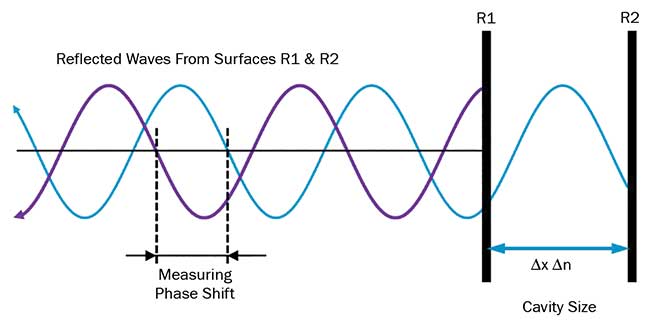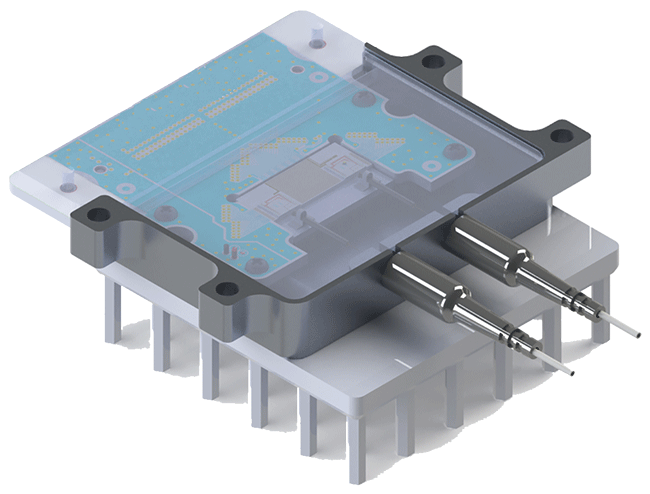ANA GONZÁLEZ AND JOSE POZO, EUROPEAN PHOTONICS INDUSTRY CONSORTIUM (EPIC)
Optical fibers have been mostly employed in the telecommunications field to transmit information from one place to another using light. The first inventions involving optical fibers took place in the 1960s at the University of Southampton in England. Since then, the technology has considerably evolved — optical fibers developed by Chalmers University of Technology in Sweden, for example, can span long-haul transmission to short-reach interconnects.
Components such as spatial multiplexers and demultiplexers for multimode fibers, developed by CAIlabs in France, provide the best interface between single-mode fiber and multimode passive or active fibers. France’s University of Lille also is making contributions to the development of fiber solutions, which is leading to new concepts in fiber lasers and amplifiers, the fiber optic sensor industry, and telecommunications.
New technologies in
fiber optics will help the industrial sector to improve problem-solving and obtain rapid information.
Different techniques can be employed to carry out detections using fiber optics. For measurement configuration, fiber sensors can employ interferometry, spectroscopy, gyroscopes, fluorescence, luminescence, and evanescent field detection. In structure, most fiber sensors employ optical grating, which can couple different propagation modes. Long-period and fiber Bragg gratings have been the most exploited in the construction of fiber sensors.
Fiber sensors in spectroscopy
Spectroscopy, the technique of splitting light into its constituent wavelengths (a spectrum), is effective for nondestructive testing and process control. Optical fiber systems based on spectroscopy have been used to monitor gases.
Finland-based Modulight Inc. offers solutions to environmental monitoring using optical fibers at industrial levels. These fibers can be employed for profiling density and humidity, monitoring pollutants, or detecting hazardous and greenhouse gases. Modulight also supplies optical fibers for industrial applications that include detection of defects in paper, steel, or food.
Ocean Optics, headquartered in Florida (U.S.), is another company that has developed an optically based oxygen sensor able to detect molecular oxygen in gas and liquid phases and in different ranges of temperature and concentration. The company’s spectrometers embedded into other devices are able to measure the emission of sulfur dioxide and other volcanic gases. These spectrometers work in the range of UV-VIS to NIR.
SEDI-ATI in France designs and develops optical fiber components and assemblies based on silica optical fibers for spectrometers that operate in challenging conditions such as radiation, high temperature, high pressure, and diverse mechanical constraints.
Interferometric fiber sensors
Optical fiber interferometry, as a precision metrology, is a great choice for accurate measurements of a variety of physical conditions in industry. Optical fiber interferometers are based on the interference of the light beams or multiple beams propagated through waveguides or space with different optical paths but arrive simultaneously at a point on the surface of a sample.
Another optical fiber-based developer, Optics11 in the Netherlands, has created different technologies based on optical fiber interferometry. This includes a device based on Fabry-Pérot configuration that can interrogate up to 30 sensors in an optical fiber array embedded to a spectrometer. The main application is the acceleration sensing for condition monitoring (Figure 1). Another recent development by Optics11 is an optical fiber interferometer based on the Michelson configuration, which results in high sensitivity and a measurement speed of one million samples per second.

Figure 1. A change in distance Δx between surfaces R1 and R2 results in a phase difference of Δφ between the two respective reflections. It appears as a sinusoidal pattern on a photodiode. Courtesy of Optics11.
IXFiber of France supplies a wide range of fiber Bragg gratings for refractive index sensors, laser diode stabilizers, and distributed temperature and strain sensors for industrial applications. One of the main applications of these fibers is in the development of gyroscopes — devices based on the interference of the light that has passed through a coil of optical fiber — for terrestrial and space environment use.
Sweden-based NYFORS supplies technology for optical fiber fabrication and is also focused on developing automatic systems for gyroscope manufacturing.
Optical fiber sensors, PICs
Several industries require large machines to detect defects and contaminated products. Robust and portable systems are an attractive alternative to make the operation easier. Photonic integrated circuits (PICs) provide such a technology through devices in which the optical fibers are integrated with several optical components.
Technobis tft-fos, a European developer and supplier of fiber optic sensing systems, has created applications-specific PICs (ASPIC)-based fiber sensing systems for thermal mapping, vibration monitoring, and position feedback in various industries. Moreover, Technobis offers small lightweight fiber optic sensors as thin as a human hair for the detection of acceleration, force, location, and deflection resulting from impacts in automotive crash tests (Figure 2).

Figure 2. Fiber optic sensor in its final package. Courtesy of Technobis.
XiO Photonics, based in the Netherlands, designs and manufactures PICs for visible light and NIR applications, such as metrology, and is used to measure distances, surfaces, and motion.
Future trends
Several optical fibers based on Bragg grating have been developed for environmental monitoring. Optical fiber spectroscopy systems have been employed for monitoring gases and liquid in different conditions of temperature, radiation, and high pressure. The development of new optical fiber technology together with transducers will provide an opportunity for measurement applications in industry.
Technologies in fiber optics will help the industrial sector to improve problem-solving and obtain information rapidly. Soon we will see the next generation of optical fiber technology devices based on PICs that monitor different physical conditions rapidly and anywhere. Furthermore, ultrasensitive optical fiber systems based on interferometry should help to detect physical conditions with high accuracy. European industry is working on the development of new sensing tools based on fibers, leading the way toward a new range of commercially viable products for new applications.
Meet the authors
Ana González is a project leader at the European Photonics Industry Consortium (EPIC). Her expertise lies in the development of systems based on integrated photonic circuits, packaging and assembly, and the investigation of applications such as chemical/biological sensing and Datacom. In addition, she has been involved in technology transfer and business development processes. González received a bachelor’s degree in chemistry from the University Autonomous of Barcelona and a Ph.D. from the Catalan Institute of Nanoscience and Nanotechnology.
Jose Pozo is the director of technology and innovation at EPIC. He has 15 years’ background in photonics technology and market knowledge, and has a large network within the industrial and academic photonics landscape. He is a member of the board of the IEEE Photonics Society Benelux. Pozo holds a Ph.D. in electrical engineering from the University of Bristol in England and a bachelor’s and master’s degree in telecom engineering.